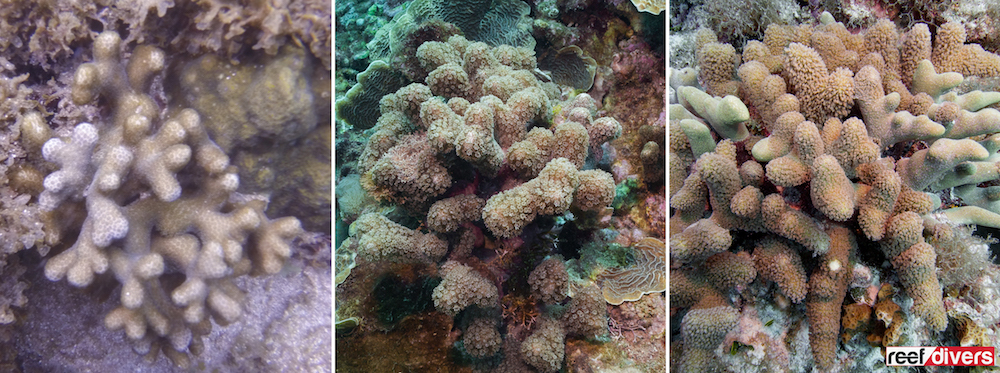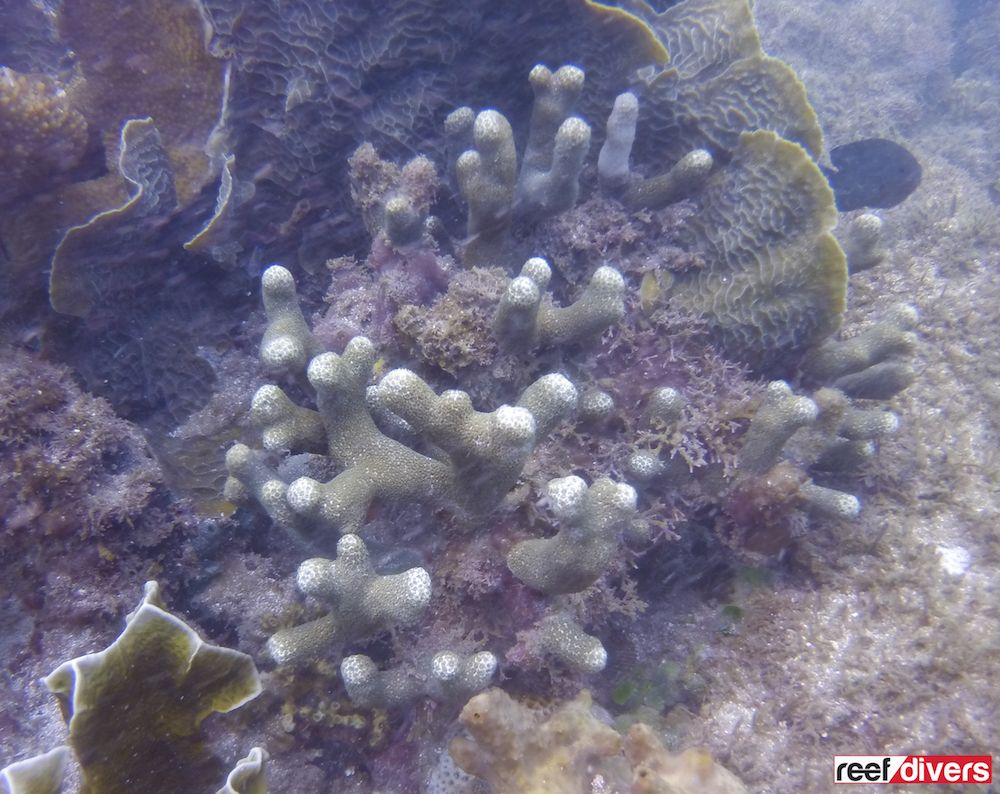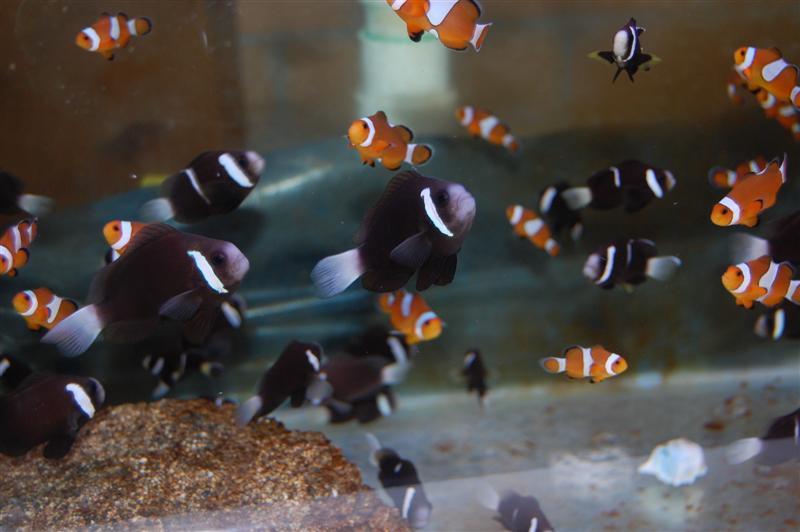Porites divaricata
Porites divaricata is the smallest species of Porites in the Caribbean. Colonies grow into small branched clusters and can be found in a range of habitats and colors.
When we first spotted this species we were surprised to find it growing in only a meter (3 feet) of water! This would the last place we expected to find this coral. Porites is a rather hardy species with a thick skeleton and thin layer of tissue covering the coral.
Thin Finger Coral
The common name for this coral is the Thin Finger Coral as it forms the smallest and thinnest branches of any Porites coral. There are six species of Porites found in the Caribbean. Porites divaricata is one of three branching forms while the other three are encrusting or plating.
If this is your first time trying to identify branching Porites it’s easy to confuse these similar looking species.
Porites divaricata will always form small colonies with branches tips. The polyps are small and do not obstruct the colonies surface.Porites divaricata is also the most colorful of the three species and can be found in a range of colors from lilac purple to yellow or red. The holy grail is a purple colony with yellow polyps!
In the pictures above I have chosen a small colony of Porites furcata, but this coral can form large patches with long stalks. I like to call this the furry coral because the polyps are usually always extended. While it looks similar to Porites divaricata, the polyps on furcata are usually always extended well above the surface of the coral.
One trick is to work by a process of elimination. Porites porites (pictured on the right) has wide branches that come to a point at the end. If the coral you are looking at has rounded tips you can then look between divaricata and furcata.

We did come across a few colonies around 12 meters (40 feet) deep so it would seem this species is adapted to living in a variety of habitats from the shallowest sunlit wave swept environments down to deeper darker murky reefs. There no telling where this coral will pop up.
You can check out the other Caribbean Porites corals on our Guide to Caribbean Corals page.



